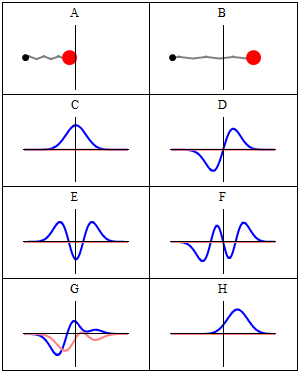Quantum Field Theory
- Introduction to Quantum Mechanics
- Wave-Particle Duality
- The Schrödinger Equation
- Quantum Operators and Measurement
- Quantum Mechanics of Systems
- The Dirac Equation
- Introduction to Quantum Electrodynamics (QED)
- Path Integrals and Quantum Mechanics
- Symmetries in Quantum Field Theory
- Quantum Chromodynamics
- The Higgs Mechanism
- Quantum Field Theory in Curved Space-Time
- Quantum Cosmology and Conclusion
Quantum Mechanics of Systems
Quantum Harmonic Oscillator

Quantum mechanical model of a particle in a harmonic potential well.
The Quantum Harmonic Oscillator is one of the most important models in quantum mechanics. It describes a particle in a potential energy well that is proportional to the square of the displacement from equilibrium. This model is applicable to a wide range of physical systems, including atoms in a crystal lattice, photons in a cavity, and quantum field theory.
Introduction to the Quantum Harmonic Oscillator
The Quantum Harmonic Oscillator is a system that experiences a restoring force proportional to its displacement from equilibrium. This is described by Hooke's law, which in the quantum realm, leads to a potential energy function of the form V(x) = 1/2 kx², where k is the spring constant.
The Schrödinger Equation for the Harmonic Oscillator
The Schrödinger equation for the harmonic oscillator is obtained by substituting the potential energy function into the time-independent Schrödinger equation. The solutions to this equation give the energy levels and wave functions of the system.
Energy Levels and Wave Functions
The energy levels of the quantum harmonic oscillator are quantized, meaning they can only take on certain discrete values. These energy levels are given by E_n = ħω(n + 1/2), where ħ is the reduced Planck's constant, ω is the angular frequency of the oscillator, and n is a non-negative integer representing the quantum number.
The wave functions, which describe the probability distribution of the particle's position, are given by Hermite polynomials. These wave functions exhibit a characteristic pattern of nodes and antinodes, which correspond to regions of zero and maximum probability, respectively.
The Creation and Annihilation Operators
The creation and annihilation operators, also known as the raising and lowering operators, are mathematical tools used to transition between energy levels of the quantum harmonic oscillator. The creation operator increases the energy level by one quantum, while the annihilation operator decreases it by one quantum.
Coherent States and Squeezed States
Coherent states are special states of the quantum harmonic oscillator that minimize the uncertainty in position and momentum. They are eigenstates of the annihilation operator and exhibit classical-like behavior.
Squeezed states, on the other hand, are states where the uncertainty in one observable (either position or momentum) is reduced at the expense of increased uncertainty in the other. These states have applications in quantum information and quantum optics.
In conclusion, the Quantum Harmonic Oscillator is a fundamental model in quantum mechanics that provides a stepping stone to more complex systems. Its solutions reveal the quantization of energy and the probabilistic nature of quantum systems, while its mathematical tools, such as the creation and annihilation operators, form the basis for many techniques in quantum theory.